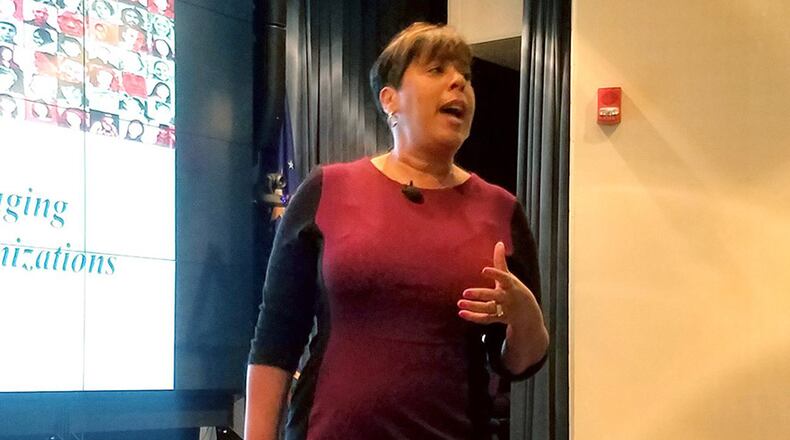Air Force Research Laboratory Vice Commander Col. Paul Henderson kicked off the event, drawing an analogy to a popular holiday staple, the poinsettia. He told of the plant’s unique origins, the result of a California farmer’s grafting branches onto a plant that originated from Mexico.
AFMC beta-testing diagnostic fitness assessments
“The poinsettia … is a way that the United States and Mexico came together and crossed the cultural divide. It is also an example of how diversity and inclusion – grafting – brought different techniques and different parts together to make a whole that was better than the sum of its parts.”
Henderson welcomed Townsend to the stage, where she began by engaging the audience to think about diversity from a “21st century perspective.” She explained that this means going beyond the traditional definitions, such as race and gender, and thinking about lesser considered aspects, such as geographical origin, disabilities, personality traits and even factors that can change over time.
To help draw attendees into the discussion, Townsend asked them to participate in activities such as Diversity Bingo for which participants were tasked to break out of their comfort zone and ask fellow audience members about their personal diversity traits. Attendees were also asked to answer diversity-related questions and share their answers in small group discussions.
The activities engaged the crowd and drew participants, both local and those joining remotely through video teleconference, into an open and frank discussion.
Townsend emphasized the importance of capitalizing on a diverse workforce to build stronger teams. However, she added that since diversity is not always immediately visible, it is important to become more mindful toward colleagues. She said that building the necessary connections to co-workers and teammates could often be as simple as asking about their needs and how best to recognize and accommodate them.
“If we don’t ask the question, we can’t take the action,” Townsend said.
Townsend left the audience with a challenge to take the lessons learned into their own workspace and put the principals of diversity awareness into practice in their everyday professional lives.
“Diversity is so important to what we do. It’s who we are, and we can all benefit from it,” she said.
Dr. Michael Gregg, AFRL’s Aerospace Systems Directorate director, presented Townsend an organizational coin after her presentation, emphasizing his belief in the importance of diversity in the organization.
About the Author
